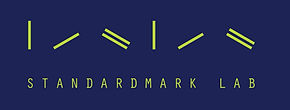
Your Product Benchmarking Services
- The Key To Greater Market
Testing Solutions
Laboratory Water Grading
ISO 3696
ISO 3696 is an international standard that specifies methods for the preparation of water used in analytical laboratory procedures. The standard provides guidelines for the production of three grades of water:
-
Grade 1: Ultra-pure water (Type I) - This is the highest quality water suitable for critical laboratory applications such as trace metal analysis and chromatography. It has the lowest levels of impurities.
-
Grade 2: Pure water (Type II) - This grade is suitable for less sensitive applications such as general laboratory work and some types of qualitative analyses.
-
Grade 3: Water for general laboratory use (Type III) - This grade is appropriate for less critical applications, such as washing glassware and non-critical processes.
ISO 3696 outlines the specifications and methods for producing each grade of water. The standard includes information on the acceptable levels of impurities such as ions, organic compounds, and particles. It also provides guidance on the types of water purification methods that can be used to achieve each grade.
Laboratories use water of different grades depending on the requirements of their specific analytical methods. The standard helps ensure consistency and reliability in laboratory results by providing a common set of guidelines for water quality.
Parameters | Grade 1 | Grade 2 | Grade 3 |
|---|---|---|---|
Silica content (mg/L) | 0.01 | 0.02 | Not Specified |
Residue after evaporation (mg/kg) | Not Applicable | 1 | 2 |
Absorbance at 254nm | 0.001 | 0.01 | Not Specified |
Oxidizable matter Oxygen (O) content (mg/L) | Not Applicable | 0.08 | 0.4 |
Conductivity (mS/m) | 0.01 | 0.1 | 0.5 |
pH Value at 25°C | Not Applicable | Not Applicable | 5.0 to 7.5 |